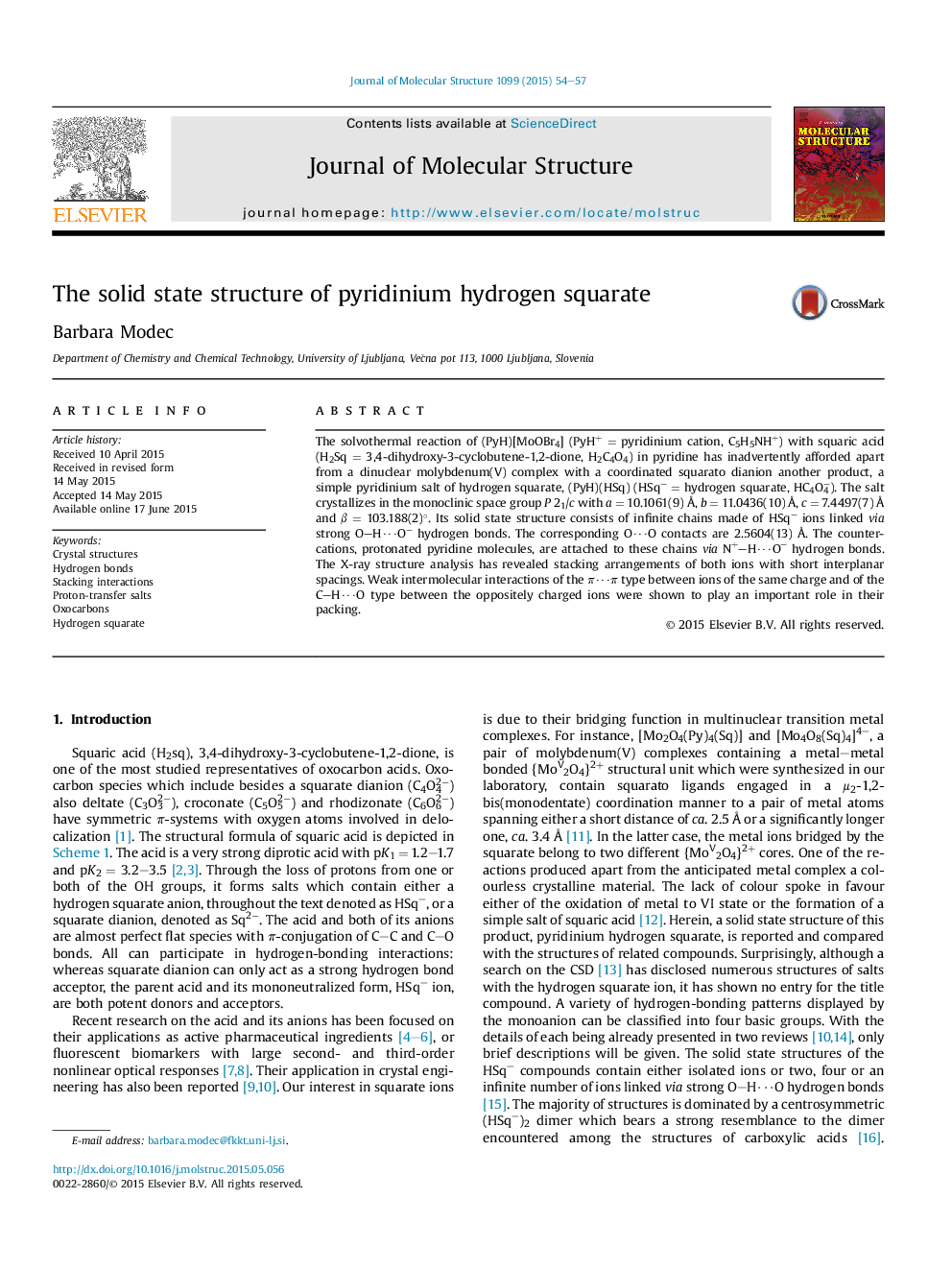| Article ID | Journal | Published Year | Pages | File Type |
|---|---|---|---|---|
| 1401735 | Journal of Molecular Structure | 2015 | 4 Pages |
•Crystal structure of (PyH)(HSq) consists of infinite anionic chains.•HSq– ions are linked via strong O–H···O– hydrogen bonds.•Ions of the same type pack to form stacks.•Stacks of nearly coplanar HSq– ions are separated by stacks of PyH+ ions.
The solvothermal reaction of (PyH)[MoOBr4] (PyH+ = pyridinium cation, C5H5NH+) with squaric acid (H2Sq = 3,4-dihydroxy-3-cyclobutene-1,2-dione, H2C4O4) in pyridine has inadvertently afforded apart from a dinuclear molybdenum(V) complex with a coordinated squarato dianion another product, a simple pyridinium salt of hydrogen squarate, (PyH)(HSq) (HSq– = hydrogen squarate, HC4O4–). The salt crystallizes in the monoclinic space group P 21/c with a = 10.1061(9) Å, b = 11.0436(10) Å, c = 7.4497(7) Å and β = 103.188(2)°. Its solid state structure consists of infinite chains made of HSq– ions linked via strong O–H···O– hydrogen bonds. The corresponding O···O contacts are 2.5604(13) Å. The countercations, protonated pyridine molecules, are attached to these chains via N+–H···O– hydrogen bonds. The X-ray structure analysis has revealed stacking arrangements of both ions with short interplanar spacings. Weak intermolecular interactions of the π···π type between ions of the same charge and of the C–H···O type between the oppositely charged ions were shown to play an important role in their packing.
Graphical abstractFigure optionsDownload full-size imageDownload as PowerPoint slide
